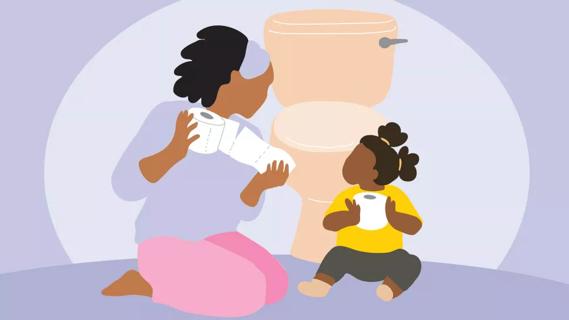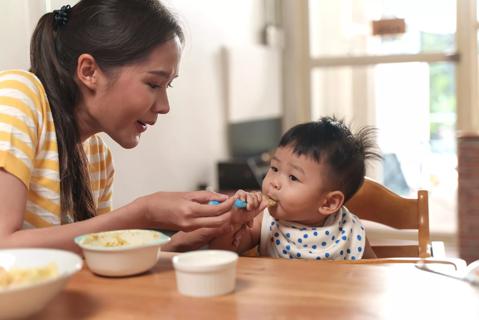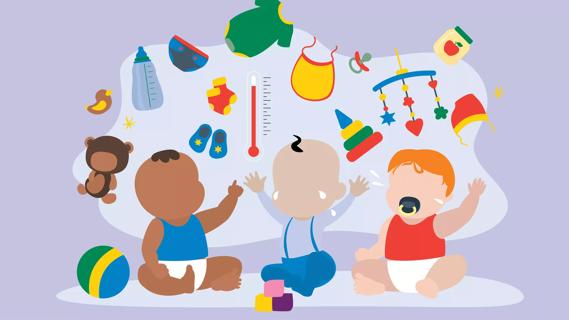Kids are never too young to learn about body autonomy

Most of us can probably recall a time when we were younger and had to do something that we didn’t really love doing in the moment.
Cleveland Clinic is a non-profit academic medical center. Advertising on our site helps support our mission. We do not endorse non-Cleveland Clinic products or services. Policy
Maybe you were full at dinner but were told you had to finish eating your green beans anyway.
Or maybe you didn’t want to wear a coat at the bus stop because you were feeling hot, but there was a breeze outside and your parents were worried you would catch a cold.
Or maybe you were encouraged to hug an aunt, uncle or grandparent you hardly knew even though you felt uncomfortable doing so.
These grin-and-bear-it moments are actually prime examples of when parents can step up to the plate and use them as teachable lessons about body autonomy and consent. In each of these examples, there are moments in which you can help your child find and foster their inner voice to talk about what does and doesn’t feel right in their own bodies — and that’s key to developing lifelong skills that will pay off as they get older.
“The most common misconception parents have is to approach the idea of consent around the topic of sex, and having the birds and the bees talk,” says pediatric psychologist Katherine Corvi, PsyD.
“While that’s certainly a start, it can also be helpful to think about consent from a larger picture and start having these conversations as soon as possible and as early as possible. It may not always be about sex more or less directly, but even when kids are toddlers, you can have conversations about consent then, too.”
Dr. Corvi explains how and why we should rethink our conversations around consent and provides tips for how to get the conversation started.
When it comes to body autonomy, it’s important to recognize how you’re feeling in your body. In order to do that, we have to foster our awareness of when something doesn’t feel right and be able to express those feelings confidently. That means doing so without fear of coercion or being afraid of making someone else feel bad about our choices.
“Talking about consent and bodily autonomy is a place where you’re helping your child develop empathy and empowerment,” says Dr. Corvi. “The kids are the experts of their own bodies, so we should be teaching them that they know what feels right for them and what doesn’t feel right for them.”
But how do you begin fostering empathy and awareness, even from a young age? Well, you can start by applying the conversation of consent to everyday activities and reinforcing a child’s ownership over their bodies.
Having these conversations early and often is key to helping your child understand consent — and that’s true even when they don’t yet have the verbal language yet to completely express their feelings.
If, for example, your child tells you to stop when you’re tickling them, you should stop tickling them right away, and then explain exactly why you’re stopping.
“You can narrate how it doesn’t feel right for them and say, ‘I’m not going to do that again because you didn’t like that,’” explains Dr. Corvi. “You’re helping them and respecting them by setting that boundary and listening to what their body is telling them. You’re also helping them to develop that inner voice and recognize that didn’t feel right.”
Consent can be learned while participating in day-to-day activities, too. Let’s use dinner time for example. As the parent, you can decide what your child eats and when they’re going to eat. But maybe you let your child decide exactly how much they eat.
“In that moment, the child is developing their inner voice to say, ‘My belly or my body is full now,’” says Dr. Corvi.
Another example: Your child doesn’t want to wear a coat at the bus stop, even though the temperature has dropped, because they feel like they get hot rather quickly. So, you let them go without a coat as long as it’s not snowing or completely unrealistic — a strategy that often lends itself to parenting styles like permissive parenting or gentle parenting.
“All of this helps a younger child understand consent in all aspects before the questions become more related to consent around social and sexual relationships,” says Dr. Corvi.
Understanding consent is important at any age, but we come to understand it in different ways as we get older. One way to think about how to tailor this conversation differently is to think about what’s developmentally appropriate for your child at different stages of their life:
These conversations can feel difficult from afar, but they don’t always have to be. At every stage, it’s important that you model ongoing communication and the importance of checking in with yourself and those you interact with about how you’re feeling.
When using the example of a family member expecting a hug or a kiss when you greet them or say goodbye, simply because they’re family, you can reinforce the idea that your child’s feelings about participating in that activity are equally, if not more, important than the adults who might get upset when your child refuses to participate.
“You want to reinforce them listening to their body, help them learn to say no and then help them understand that it’s not their responsibility to make another adult feel better,” says Dr. Corvi.
And when it comes to more challenging conversations — like stranger danger, the dangers of sexting, social media and what’s appropriate to put online when it comes to your body — it’s even more important to be direct and clear about what boundaries should be put into place to protect your child from harm.
“In every stage, you want to model ongoing communication and the importance of checking in with yourself and others about how we’re feeling,” says Dr. Corvi. “You’ll also want to talk very directly about setting boundaries around not sending explicit texts or photos or posting such things on social media. These are all boundaries that are very obviously healthy and pretty concrete.”
At the end of the day, the best things a parent can do is keep an eye out for teachable moments where their child can boost their own self-awareness, and to teach empathy and compassion at every step of the way. That starts with having empathy for your child, too.
“We have to remember we’re not in their body, so helping them come to this place where they’re listening to their bodies and what their bodies are telling them and helping them to express those feelings is a way to empower them,” encourages Dr. Corvi.
“This will not only help them in the moment, but it will also help them down the road when they’re in more social situations as teenagers and young adults.”
Learn more about our editorial process.

Knowing how much time your baby should typically go between naps can help keep them on a more regular schedule

Set your child up for potty training success by waiting until they’re ready, keeping the pressure low and going heavy on the praise

In babies under 12 months, honey may cause a serious illness called infant botulism

You can help strengthen your child’s immune system by focusing on hand washing and staying up-to-date on their vaccines

Lanugo — the soft, fine hair that develops in utero — is harmless and will shed within a few weeks

Crossed eyes in a newborn are fairly common, typically harmless and usually go away

A dental emergency, quick action is key to preventing long-term damage

Severe and debilitating headaches can affect the quality of your child’s life

Your metabolism may torch 1,300 to 2,000 calories daily with no activity

A gentle touch in all the right places may help drain your sinuses